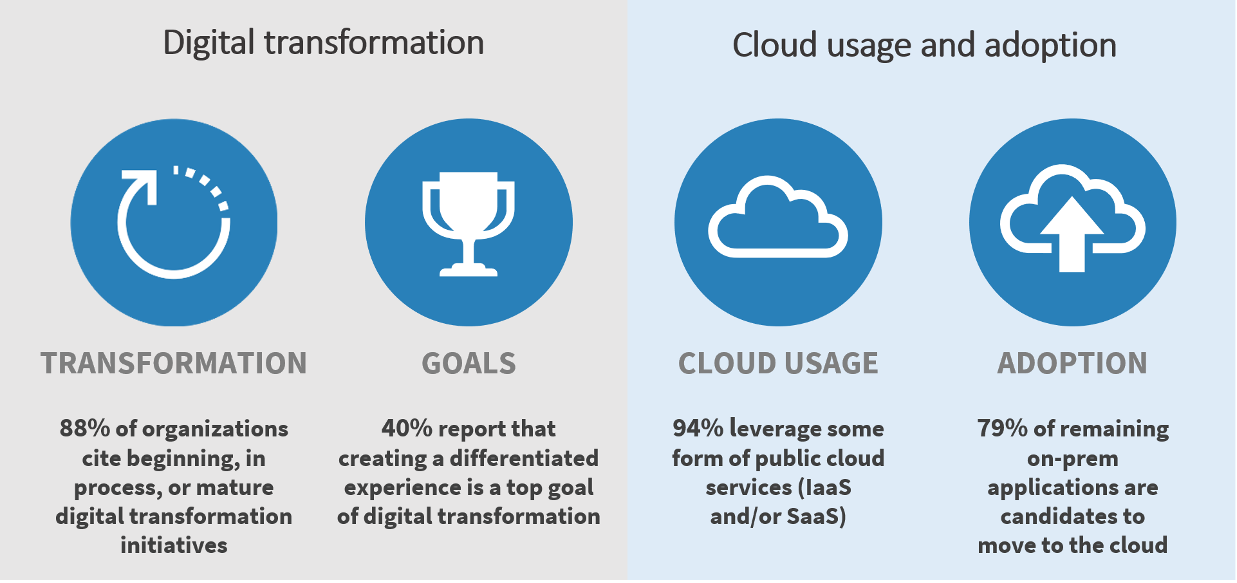
Brought to you by:
Enterprise Strategy Group | Getting to the Bigger Truth™
ESG WHITE PAPER
Autonomous Digital Experience Management (ADEM) Yields Benefits Across the Organization
Palo Alto Networks' ADEM Improves Visibility, Operational Efficiency, and the User Experience
By Bob Laliberte, ESG Principal Analyst; and Leah Matuson, Research Analyst
DECEMBER 2021
IT Environments are Rapidly Evolving
Figure 1. Digital Transformation and Public Cloud Usage

Source: Enterprise Strategy Group
Figure 2. Nearly Three-quarters of Organizations are Pro Work-from-home
Relative to your organization’s original outlook on work-from-home policies, how has that perspective changed the longer the pandemic has persisted? (Percent of respondents, N=647)
Source: Enterprise Strategy Group
Challenges Created by Highly Distributed Environments
Lack of security integration (28%), and the performance of internet connections (25%) are two top network environment challenges.
Organizations require end-to-end visibility into the actual data paths for all applications—regardless of location.
Palo Alto Networks’ Autonomous Digital Experience Management (ADEM) for Prisma Access
Palo Alto Networks' ADEM Provides Value
SaaS Application Outages No Longer Bring Work to a Standstill
End-user Device Issues are Quickly Identified and Resolved
Visibility into Branch Endpoints and IOT Devices Offers Greater Operational Efficiency, Better User Experiences
The Bigger Truth
Empower IT teams to deliver optimal user experiences
This ESG White Paper was commissioned by Palo Alto Networks and is distributed under license from ESG.
All trademark names are property of their respective companies. Information contained in this publication has been obtained by sources The Enterprise Strategy Group (ESG) considers to be reliable but is not warranted by ESG. This publication may contain opinions of ESG, which are subject to change from time to time. This publication is copyrighted by The Enterprise Strategy Group, Inc. Any reproduction or redistribution of this publication, in whole or in part, whether in hard-copy format, electronically, or otherwise to persons not authorized to receive it, without the express consent of The Enterprise Strategy Group, Inc., is in violation of U.S. copyright law and will be subject to an action for civil damages and, if applicable, criminal prosecution. Should you have any questions, please contact ESG Client Relations at 508.482.0188.

Enterprise Strategy Group | Getting to the Bigger Truth™
Enterprise Strategy Group is an IT analyst, research, validation, and strategy firm that provides market intelligence and actionable insight to the global IT community.
